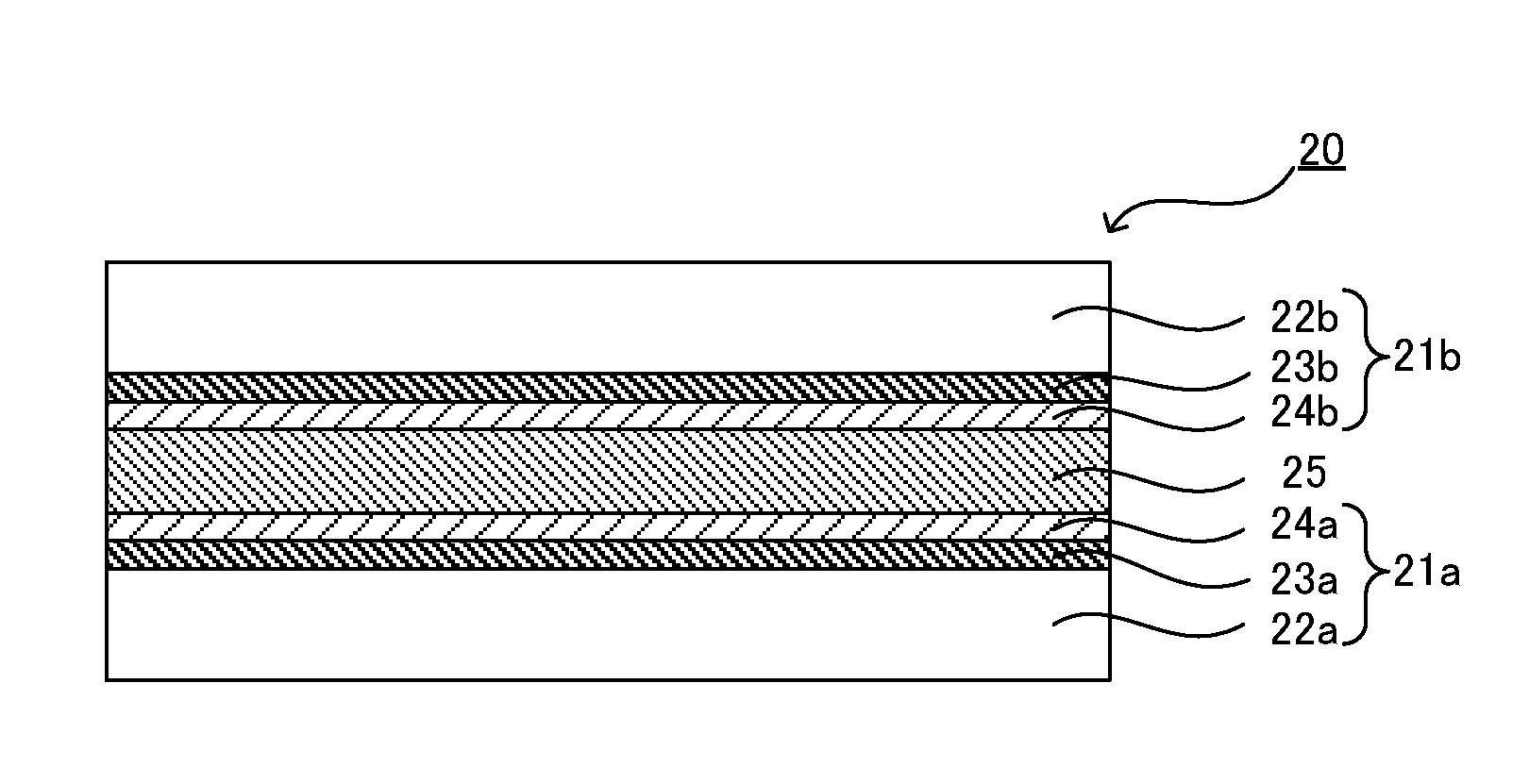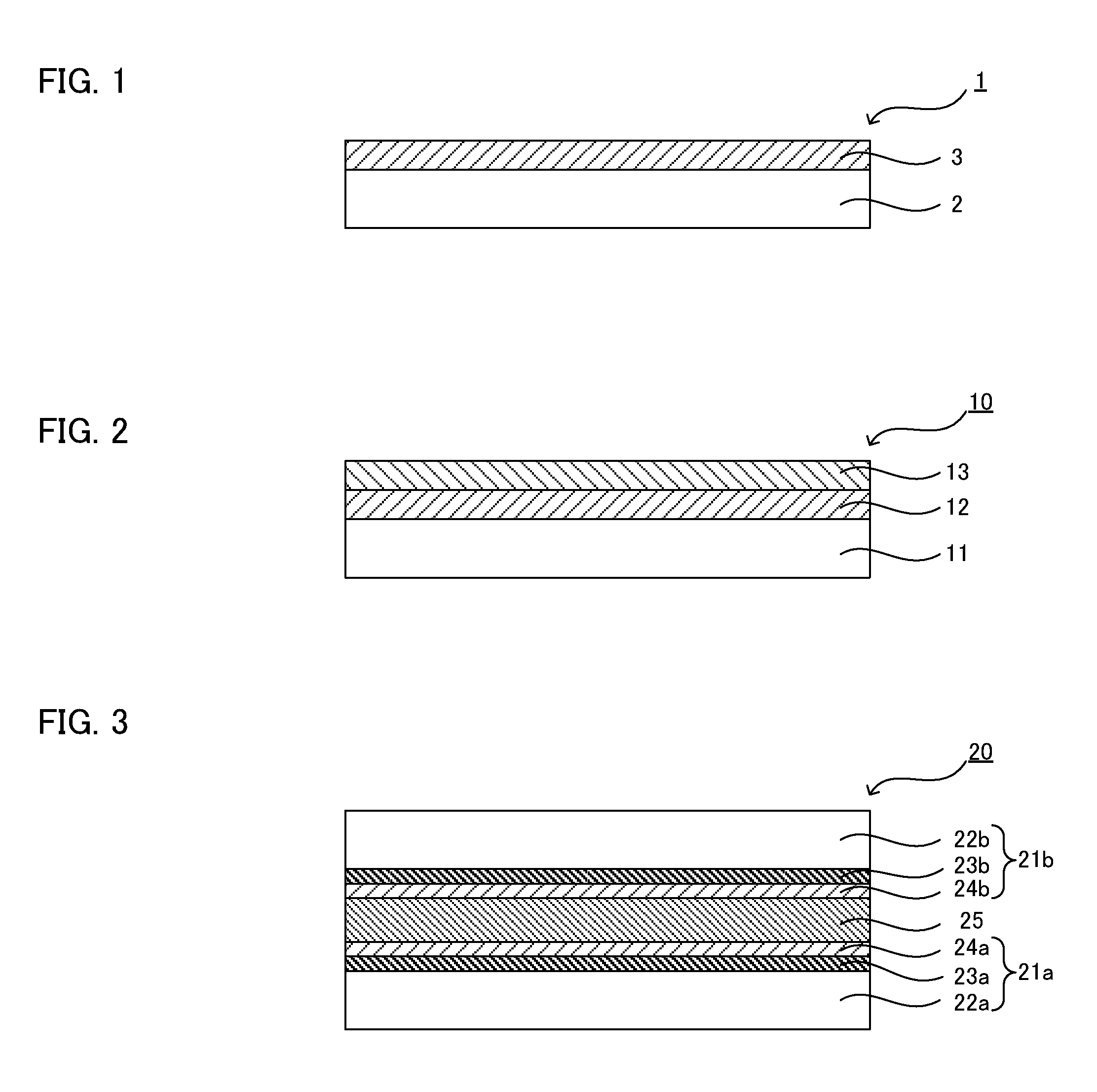Thermosetting composition with photo-alignment property, alignment layer, substrate with alignment layer, retardation plate, and device
- Summary
- Abstract
- Description
- Claims
- Application Information
AI Technical Summary
Benefits of technology
Problems solved by technology
Method used
Image
Examples
first embodiment
(1) First Embodiment
[0225]The first embodiment of the liquid crystal display element in an embodiment of the present invention includes a first substrate with an alignment layer in which a first alignment layer is disposed on a first substrate, a second substrate with an alignment layer in which a second alignment layer is disposed on a second substrate, and a liquid crystal layer disposed between the first substrate with an alignment layer and the second substrate with an alignment layer, and the first alignment layer and the second alignment layer are such as to be formed from the thermosetting composition with a photo-alignment property, or the alignment layer described above.
[0226]FIG. 3 is a schematic sectional view showing an example of the liquid crystal display element in an embodiment of the present invention. A liquid crystal display element 20 exemplified in FIG. 3 comprises a first substrate with an alignment layer 21a, a second substrate with an alignment layer 21b, and...
second embodiment
(2) Second Embodiment
[0231]The second embodiment of the liquid crystal display element in an embodiment of the present invention comprises the retardation plate.
[0232]The constitutions of the liquid crystal display element may be the same as the constitutions of a general liquid crystal display element. For example, the retardation plate may be disposed outside the substrate constituting the liquid crystal display element, or the substrate constituting the liquid crystal display element may also serve as the substrate constituting the retardation plate, and the alignment layer and the retardation layer may be disposed inside the substrate.
[0233]The present disclosure is not limited to the embodiments. The embodiments are exemplification, and any is included in the technical scope of the present disclosure if it has substantially the same constitution as the technical idea described in the claim of the present disclosure and offers similar operation and effect thereto.
examples
[0234]Embodiments of the present invention are described in further detail with reference to examples and comparative examples hereinafter.
PUM
| Property | Measurement | Unit |
|---|---|---|
| Structure | aaaaa | aaaaa |
Abstract
Description
Claims
Application Information
 Login to View More
Login to View More - R&D
- Intellectual Property
- Life Sciences
- Materials
- Tech Scout
- Unparalleled Data Quality
- Higher Quality Content
- 60% Fewer Hallucinations
Browse by: Latest US Patents, China's latest patents, Technical Efficacy Thesaurus, Application Domain, Technology Topic, Popular Technical Reports.
© 2025 PatSnap. All rights reserved.Legal|Privacy policy|Modern Slavery Act Transparency Statement|Sitemap|About US| Contact US: help@patsnap.com



